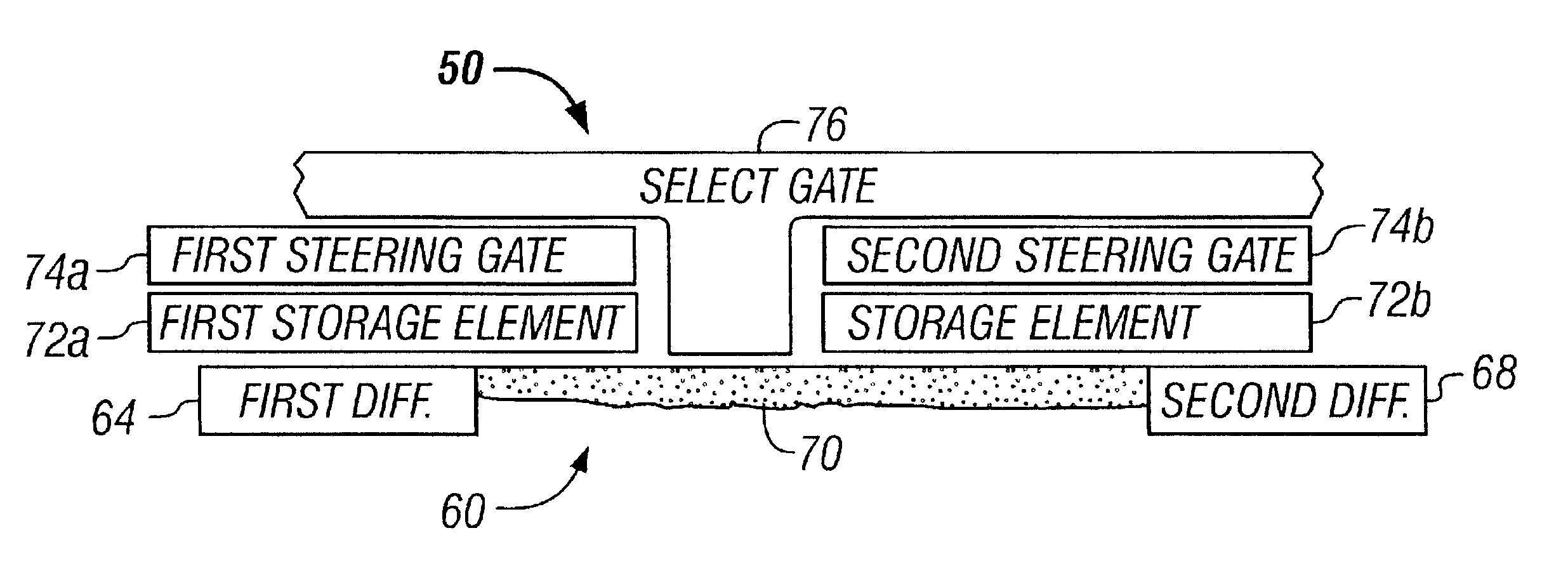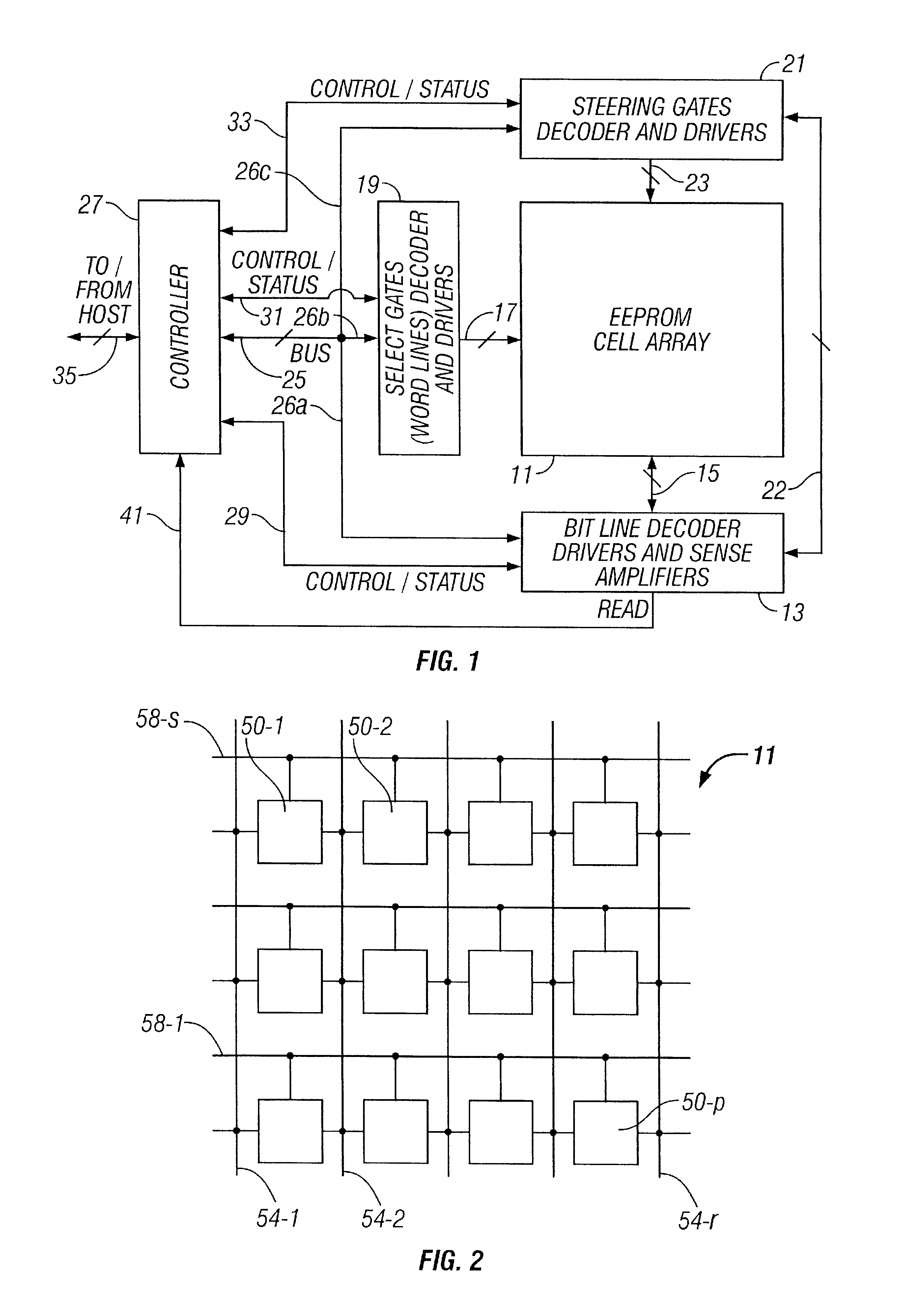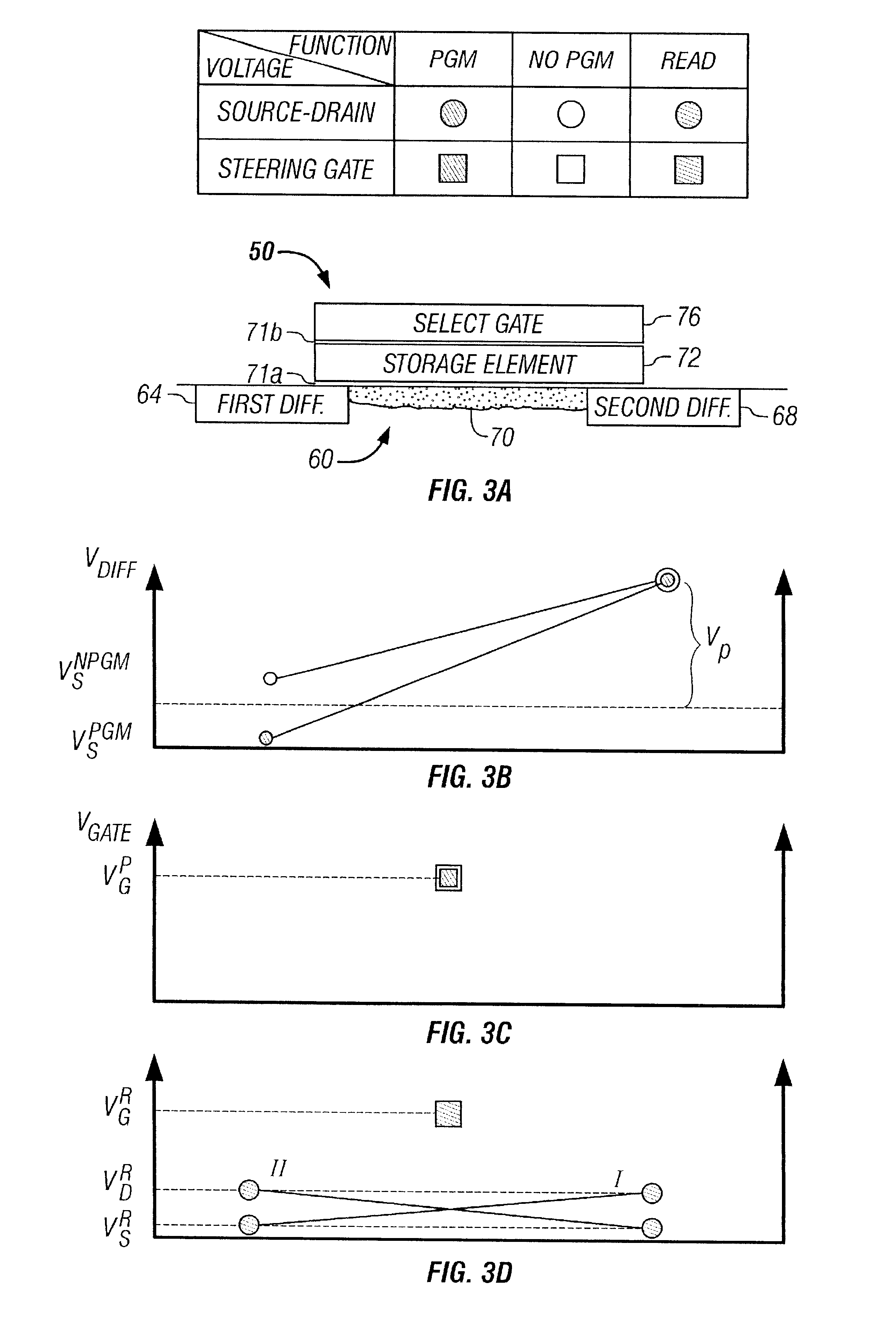Dual cell reading and writing technique
a memory cell and double-cell technology, applied in the direction of digital storage, instruments, transistors, etc., can solve the problems of reducing the reading reducing the speed of the whole array reading speed, and reducing so as to increase the speed of programming and the effect of increasing the lifetime of the memory cell array
- Summary
- Abstract
- Description
- Claims
- Application Information
AI Technical Summary
Benefits of technology
Problems solved by technology
Method used
Image
Examples
Embodiment Construction
FIG. 1 shows a block diagram of a memory system controlling and driving an array of memory elements. A large number of individually addressable memory cells 11 are arranged in a regular array of rows and columns. Individual memory cells can be controlled by bit lines, s elect gates and steering gates. Bit lines are designated herein to extend along columns of array 11, and word lines are designated to extend along the rows of array 11. Bit line unit 13 may include a bit line decoder, storage elements, driver circuits and sense amplifiers. Bit line unit 13 can be coupled to cell array 11 by line 15, and to controller 27 by bit-control line 29 and by read line 41. Word line unit 19 may include a select gate decoder and driver circuits. Word line unit 19 can be coupled to cell array 11 by line 17, and to controller 27 by word-control line 31. Steering line unit 21 may include a steering gate decoder and driver circuits. Steering unit 21 can be coupled to cell array 11 by line 23, to co...
PUM
 Login to View More
Login to View More Abstract
Description
Claims
Application Information
 Login to View More
Login to View More - R&D
- Intellectual Property
- Life Sciences
- Materials
- Tech Scout
- Unparalleled Data Quality
- Higher Quality Content
- 60% Fewer Hallucinations
Browse by: Latest US Patents, China's latest patents, Technical Efficacy Thesaurus, Application Domain, Technology Topic, Popular Technical Reports.
© 2025 PatSnap. All rights reserved.Legal|Privacy policy|Modern Slavery Act Transparency Statement|Sitemap|About US| Contact US: help@patsnap.com



